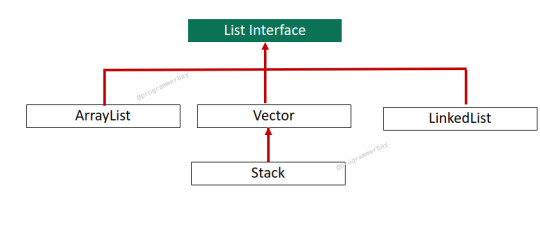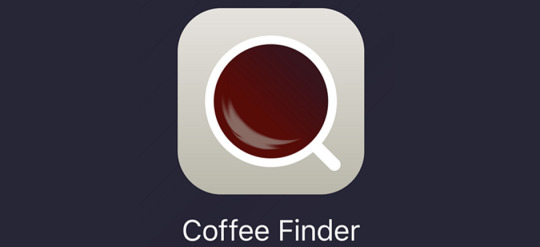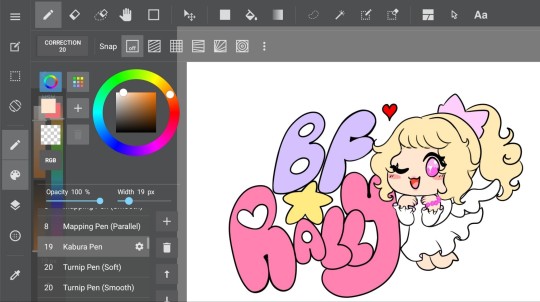#Java framework
Explore tagged Tumblr posts
Text
0 notes
Text



19 July 2023
I am trying my best to drink more water, and this big water bottle with motivational quotes is helping me a lot! Is strange, but to look at it, and know the pacing is great.
About programming, as I have to hurry up with my studies in order to keep up with the new architecture squad, I am trying to figure out the best notebook to write, as I learn better by writing.
I am using the purple one to Java, programming logic, SQL and GIT-Github; the colorful to Typescript and Angular, and I am thinking of using the brown to Spring Framework (as it is a huge topic).
Yes, for whom was working with JSF, JSP, JQuery (it is better to say that I was struggling with JQuery... hated it), it is a big change to turn my mindset to this modern stack - I will deal less with legacy code.
I am accepting all possible tips regarding Angular and Spring Framework, if is there anyone working with it here ❤️
That's it! Have you all a great Wednesday 😘
#studyblr#study#study blog#daily life#dailymotivation#study motivation#studying#study space#productivity#study desk#programming struggles#programming#must lean java#spring framework#coding#coding community#programming community#bottle#water bottle#notebook#stationary#purple#i love purple
66 notes
·
View notes
Text
.
#tag talk#I feel good cause a new friend at work said something about how my boyfriend hasn't talked much to him since meeting me#And I was like uh oh I do not want to be that bitch#and I know he's been trying to organize some kind of game might and I was like rip you can't get him to play stardew valley with you#and I don't like stardew valley so I was like hey what about minecraft? because if I get them playing together on a realm then It's fixed#so anyway now I might have a new server and friend group to play with and hopefully I'll be less in the way of the preexisting friend group#because I'm really conscious of when I'm the reason stuff goes poorly so I don't wanna be a reason friends don't hang out anymore.#cause that shit sucks. jealous girlfriend type can go die I ain't about hogging people I don't feel good about it.#I just want everyone to get along and be friends#I'm putting in the work to learn bedrock mechanics. that's how committed I am to this. I hate variations on an established base.#it's the autistic in me for sure. I loathe multiple versions of songs. there can only be one true version. one right answer. all else is bad#so the slight discrepancies between bedrock and Java drive me absolutely nuts bonkers up the wall#I read a really good twilight fanfic and it rewired my brain and now I'm forever mixing up which is cannon and which is fanfic#because my brain immediately booted the version I preferred less and installed the new fanfic version as the correct right version#anyway. I'm hunting tutorials that actually explain the mechanics and taking notes so I know how to adjust the designs for aesthetics#because you need the minimum mechanical base to work before you can ad lib a building style and design onto the structural framework#I figured out the iron farm mechanics so tomorrow I think I'm gonna work on gold farm stuff. and redstone I just want to learn myself
2 notes
·
View notes
Text
Vector Class in Java With Program Example
Vector is a collection class that implements dynamic array data structure to store elements, signifying growable array as its underlying data structure. It accepts duplicate elements and preserves insertion order. It can hold elements of different data types and allows null value. The Vector class was introduced in Java 1.2 version and is part of the original Java API. It is similar to…

View On WordPress
#collection#collection framework#Contructor of Vector#java#java program#Legacy class#List interface#Methods of Vector#Vector class
2 notes
·
View notes
Text
Java Projects for Your Resume: Why They Matter

Java Projects for Your Resume: Why They Matter
Adding Java projects to your resume can really help you land a job. Employers want to see real experience, and showcasing projects shows that you know how to apply your skills. A solid portfolio stands out more than just having certifications. These projects reflect your problem-solving skills, creativity, and understanding of Java basics and advanced concepts. Whether you’re just graduating or changing careers, having practical projects is important. Students taking Java course in Coimbatore are often encouraged to create live applications to boost their resumes and improve their chances in job interviews.
Simple Java Projects for Beginners
If you're just starting out, try adding basic Java projects like a calculator, to-do list, or temperature converter to your resume. These projects are great for grasping object-oriented programming and basic GUI design. They’re usually part of beginner exercises in Java training programs in Coimbatore, helping you learn coding logic efficiently. Working on simple applications also enhances your debugging and problem-solving skills, which are key for coding interviews. It’s a good idea for beginners to focus on these smaller projects before tackling more advanced systems.
Intermediate Java Projects That Impress
Once you’ve got the basics down, you can move on to intermediate-level Java projects for your resume, like library management systems, quiz apps, or student record management tools. These projects show that you have a better grasp of file handling, user authentication, and data structures. Many Java course in Coimbatore make sure students work on these types of projects to build real-world problem-solving skills. These applications don’t just show off your technical skills; they also demonstrate that you can create user-friendly programs.
Advanced Java Projects That Stand Out
For those with more experience, advanced projects could include chat applications, e-commerce websites, or banking systems using JavaFX or Spring Boot. These projects show that you’re skilled in frameworks, APIs, and databases. Many top Java training programs in Coimbatore include this type of work in their syllabus. Having these projects on your resume proves to employers that you’re ready for the job and can manage larger systems. Using GitHub to share your source code, along with documentation and screenshots, can give you an edge.
Importance of Full-Stack Java Projects
A full-stack Java project covers both the frontend and backend, often using HTML, CSS, JavaScript, Java, and MySQL. These projects help show that you’re not just focused on the backend but can also manage UI and databases. Joining a Java course in Coimbatore that includes full-stack content will give you an advantage in today’s job market. Such projects mimic real work environments and prove you can handle end-to-end application development.
Using Java Projects to Show Teamwork
Employers often look for teamwork skills. Including team-based Java projects on your resume, where you collaborated with others, demonstrates your ability to communicate, manage tasks, and work with version control systems like Git. Group projects in Java training programs in Coimbatore teach students how to build scalable applications with effective task management. Showcasing these projects on your resume emphasizes both your technical abilities and your teamwork qualities.
How to Present Java Projects on a Resume
When listing Java projects on your resume, make sure to include the project title, a brief description, the technologies you used, and your role in the project. Focus on the impact of your work—did it solve a real problem or improve performance? Students in Java course in Coimbatore learn how to document and present their projects for interviews. Adding links to demos or GitHub repositories is a nice touch. How you present your projects can help you stand out to potential employers.
Mistakes to Avoid While Showcasing Java Projects
Avoid listing too many projects that aren’t complete or too similar. Don’t just focus on frontend work; employers want to see sound coding and backend integration too. Students in Java training programs in Coimbatore are advised to keep their code clean, well-documented, and free of bugs. Steer clear of copying projects from the internet; instead, focus on customizing and innovating based on your learning. This shows creativity and confidence, and you'll be better prepared for questions about your projects in interviews.
How Projects Improve Your Job Readiness
Including Java projects on your resume is vital for showing you’re ready to work. It shows you can create practical applications with your skills. Employers want candidates who can contribute from day one. A strong portfolio, supported by a solid Java course in Coimbatore or good Java training program, can greatly improve your hiring chances. Recruiters appreciate real-world experience over just theoretical knowledge or course certificates.
Conclusion: Learn, Build, and Stand Out with Xplore IT Corp
If you want to get good at Java and build impressive projects for your resume, then a structured Java course in Coimbatore is a great place to start. At Xplore IT Corp, we provide relevant Java training that includes hands-on project development, resume-building workshops, and full placement support. With real experience and guidance, you can create a portfolio that impresses employers. Let your Java projects show your skills learn, build, and grow with us at Xplore IT Corp.
FAQs
1. What types of Java projects should I include in my resume?
Include a mix of simple, intermediate, and advanced projects to showcase various Java skills like OOPs, file handling, APIs, and databases.
2. How many Java projects should I list on my resume?
List 2 to 4 well-documented projects. Focus on quality rather than quantity, ensuring each project highlights a unique skill set.
3. Do Java projects really help in getting a job?
Yes, they provide evidence of your coding skills and can help you make a strong impression in interviews, especially for roles needing practical programming.
4. Where can I get help for building Java projects?
Enrolling in a Java course in Coimbatore, like the one offered by Xplore IT Corp, can provide expert guidance, resources, and structured projects.
5. Can I use GitHub to showcase my Java projects?
Definitely! GitHub is a great platform to display your work to potential employers. Include links to your GitHub projects in your resume for easy access.
#Java programming#Java developer#Java applications#Java frameworks#Java projects#Java coding#Java syntax#object-oriented programming#Java backend#Java frontend#Java database connectivity#Java Spring Boot#JavaFX#Java GUI#Java tools#Java version control#Java IDE#Java servlet#Java web development#Java interview questions
0 notes
Text
Decode DSA with Python: Comprehensive Learning Including Python Tuple
Master Data Structures and Algorithms (DSA) with Python in this comprehensive guide. Learn key concepts step-by-step, including how Python tuples play a role in efficient coding. Whether you're preparing for coding interviews or improving your problem-solving skills, this tutorial offers practical insights and clear examples to boost your understanding of Python-based DSA. Click to read the complete guide
#bca course subjects#python tuple#Exception handling in Java#Collection framework in java#Inheritance in java#Interface in Java
0 notes
Text
0 notes
Text
Ücretsiz Yazılım Eğitimleri: Java ve Blazor Teknolojilerine Hakim Olun!
Albatu YouTube kanalı, yazılım geliştirme alanında kapsamlı ve ücretsiz eğitim serileri sunmaktadır. Özellikle Java ve Blazor teknolojilerine odaklanan bu eğitimler, hem temel seviyedeki geliştiriciler hem de deneyimli yazılımcılar için değerli kaynaklar içermektedir. 1. Ücretsiz Full Java Eğitimleri Bu oynatma listesi, Java programlama diline giriş yapmak isteyenler için idealdir. Temel Java…
#.net#blazor#entity framework#nhibernate#ücretsiz blazor eğitimleri#ücretsiz entity framework eğitimleri#ücretsiz java eğitimleri#ücretsiz nhibernate eğitimleri#Ücretsiz yazılım eğitimi
0 notes
Text
youtube
🌟 What Is Java? | Java Programming Introduction 🌟 Welcome to this in-depth Java Tutorial for Beginners! In this video, you'll learn:
1️⃣ What is Java?
2️⃣ The History of Java Programming Language – From its origins to its evolution, including key milestones.
3️⃣ Features of Java (Java Buzzwords) – Why Java is a powerful and versatile programming language.
4️⃣ Applications of Java in the Real World – Discover how Java powers modern software development.
This is the perfect starting point if you're preparing for placements, building your programming knowledge, or simply curious about Java programming. Whether you’re new to coding or want a quick refresher, this video covers everything in just a few minutes! 🚀 Topics Covered: 👉🏻 Introduction to Java Language 👉🏻 History of Java || Origins, Evolution, Editions, and Versions 👉🏻 Features of Java Explained (Hindi and English) 👉🏻 Java Buzzwords and Why They Matter 👉🏻 Java Applications in Real-World Scenarios ------------------------------------------------------------------------------------------ 📺 Java Tutorials for Beginners Playlist: https://www.youtube.com/playlist?list=PLlhM4lkb2sEjtoPRP2AfVGJWFoltwtDdx ------------------------------------------------------------------------------------------
🌐 What is Java : https://smartprogramming.in/tutorials/java/java-introduction
🌐 History of Java : https://smartprogramming.in/tutorials/java/history-of-java
🌐 Features of Java : https://smartprogramming.in/tutorials/java/features-of-java
🌐 Use of Java : https://smartprogramming.in/tutorials/java/use-of-java ------------------------------------------------------------------------------------------ 🌐 Free + Premium Courses Website : https://smartprogramming.in/ 📞 For more details Call or What's App : +91 98887-55565, +91 62838-30308
#education#core java#advance java#Java Programming#Java by deepak sir#Smart Progrsmming#Java by deepak in hindi#Latest java updates#Java courses#Springboot#Springboot frameworks#Java full stack web development#Youtube
1 note
·
View note
Text
The full list of the top tools & frameworks for Java integration testing that every developer needs to know in order to improve their current testing plan.
#java integration testing frameworks#java integration testing tools#java#integration testing frameworks
0 notes
Text
Introducción a Clientes REST en Spring Boot: Beneficios y Casos de Uso (1era. Parte)
Sección 1: ¿Por qué usar clientes REST con Spring Boot? Beneficios clave Desacoplar componentes de una aplicación: Los clientes REST permiten separar las funcionalidades de diferentes servicios, manteniendo cada uno independiente y modular. Reutilizar código: Con REST, los mismos clientes se pueden reutilizar en diferentes contextos, facilitando el mantenimiento y la eficiencia. Facilitar la…
0 notes
Text
Java GUI Frameworks

Java GUI Frameworks: SWT, AWT, Swing, JavaFX, Apache Pivot. Read about the Java GUI frameworks and libraries in our overview.
Java GUI frameworks play a vital role in simplifying the process of developing user interfaces for Java applications. These frameworks provide developers with a set of tools, libraries, and components that enable them to create interactive and visually appealing graphical user interfaces (GUIs).
In this article, we will show you the world of Java GUI frameworks, their benefits, and some popular options available to you as a developer.
1. Comparison of Java GUI Frameworks
Point values and meanings:
Ease of Use: This metric represents how user-friendly the Java GUI framework is in terms of development. A higher score indicates a more intuitive and simpler development process, while a lower score suggests a longer learning curve or greater complexity.
Cross-Platform Compatibility: This factor reflects how well the Java GUI framework supports multiple platforms, such as Windows, macOS, and Linux. Higher scores indicate better compatibility across various operating systems.
Customizability: Customizability assesses the ability to modify and tailor the Java GUI framework to suit specific requirements. A higher score means the Java GUI framework provides extensive options for customization and flexibility.
Performance: Performance measures the execution speed and efficiency of the GUI framework. A higher score indicates better performance, faster rendering, and a smoother user experience.
Community and Support: This metric evaluates the size and activity level of the community around the framework. Higher scores suggest a larger and more supportive community, with active forums, documentation, and available resources.
Integration: Integration assesses how well the Java GUI framework can be easily integrated with other tools, libraries, and frameworks. A higher score indicates better compatibility and ease of integration.
Freshness & Trendiness: This factor indicates the Java GUI framework’s relevance and popularity in the current industry. Higher scores suggest the framework is actively maintained, updated with modern features, and widely adopted by developers.
Total Points: The total points column represents the sum of the scores across all categories, providing an overall assessment of the framework’s strengths and weaknesses based on the specified criteria.
You can see the results on Bluebird’s website.
2. Introduction to Java GUI Frameworks
Java GUI frameworks are sets of tools, libraries, and APIs that assist developers in creating graphical user interfaces for Java applications. These frameworks provide a rich collection of pre-built components, layout managers, and event-handling mechanisms, that simplify the process of GUI development.
3. Benefits of Using Java GUI Frameworks
Using Java GUI frameworks offers several benefits. Let’s check out these benefits!
Enhanced Productivity: GUI frameworks provide reusable components and ready-to-use templates, allowing you to build interfaces quickly and efficiently.
Cross-Platform Compatibility: Java GUI frameworks are designed to work on various platforms, ensuring that applications developed using these frameworks can run on different operating systems without extensive modifications.
Rich Component Libraries: Java GUI frameworks offer a wide range of components, such as buttons, menus, text fields, and tables, enabling you, as a Java developer, to create feature-rich and interactive interfaces.
Event Handling Mechanisms: Java GUI frameworks provide event-driven programming models, allowing you to respond to user interactions effectively.
4. Java GUI Frameworks
Swing: A Classic (and really old school) Java GUI Framework
Swing is a mature and widely used Java GUI framework. It comes bundled with the Java Development Kit (JDK) and offers a comprehensive set of components and layout managers. Swing provides a flexible architecture that allows developers to create visually appealing and customizable GUIs.
JavaFX: A Modern Approach to GUI Development
JavaFX is a modern Java GUI framework that provides a rich set of graphical and media-related APIs. It offers a declarative programming model, enabling you to design interfaces using XML-based markup language (FXML) or through Java code. JavaFX provides excellent support for multimedia, 3D graphics, and animation, making it an ideal choice for building visually stunning applications.
Apache Pivot: Cross-Platform GUI Toolkit
Apache Pivot is an open-source platform for building cross-platform GUI applications in Java. It provides a comprehensive set of user interface components and supports various desktop and mobile platforms. Apache Pivot follows a data-driven approach, making it easy to bind data models with user interface components.
AWT: Simplifying Java GUI Development
The Abstract Window Toolkit (AWT) is one of the foundational GUI frameworks in Java. It provides a set of classes and APIs for creating graphical user interfaces (GUIs) in Java applications. AWT was introduced in the early days of Java and is part of the Java Foundation Classes (JFC).
SWT: The Standard Widget Toolkit
SWT is a Java GUI framework that provides a native look and feel across different platforms. It uses native widgets provided by the underlying operating system, resulting in interfaces that integrate with the platform’s user interface guidelines. SWT is particularly popular for developing desktop applications with complex and native-like interfaces.
If you are stuck with your project and are in need of senior Java developers, simply hire senior Java developers from Bluebird!
Originally published at https://bluebirdinternational.com on July 16, 2023.
0 notes
Text

okay finally colored this!
idk what the sites color theme will be, so the colors will most definitely change but for now we have a logo (ft. my oc A)
#u can just tell the type of fictional guys im into by looking at A for three seconds#tho i will try to make a variety of guys to collect and not all cutieful ones haha#i didnt feel like coding yesterday#i was locked in drawing for a comic#so i decided to hse some of that energy here#anywas coding wise!#i did a lot of research the last few days#cause i learned about frameworks#and i was like well shit#am i supposed to use them to make my website instead of doing it purely in html css and java?#and then i learned that u need to get comfortable with html css and javascript to use frameworks with little confusion#so sticking with the old fashion way#if the site gets very complicated in the far future#i might transition to frameworks#tho ik using frameworks can make websites slower oof#i went on neopets a few days back and i was shocked at how modern it looked#but god was it laggy#would like to avoid that#but yea#i will hopefully get back into coding this upcoming week#im like locked in for something else rn but ill probably have days where i dont wanna draw#boyfriend rally#web development#artists on tumblr#art#wip
1 note
·
View note
Text
Understanding Java Frameworks: Powering Modern Application Development

Java frameworks have become an essential part of the development landscape, streamlining tasks and boosting productivity for developers. In a world where building applications needs to be fast, efficient, and scalable, these frameworks provide the backbone that supports the modern digital experience. Whether you're building web applications, APIs, or enterprise-level software, Java frameworks offer the structure and libraries you need to succeed. In this blog post, we’ll explore the importance of Java frameworks, their types, and how they make developers’ lives easier.
What is a Java Framework?
Before diving into specific examples, it’s crucial to understand what a Java framework is. At its core, a framework is a pre-built structure that provides a foundation for developers to build applications without having to start from scratch. Think of it as a skeleton that comes with built-in components and tools, allowing developers to focus on writing their application’s unique features instead of reinventing the wheel.
Java frameworks are particularly beneficial because they enable developers to adhere to best practices, ensure scalability, and reduce development time. They come with predefined templates, libraries, and conventions that help to solve common problems, such as handling data persistence, user interface design, and security.
Why Use a Java Framework?
Java frameworks simplify the development process in several ways:
Efficiency: Frameworks provide ready-made tools and libraries that speed up the development process. Developers can focus on implementing specific business logic rather than writing code for common tasks such as database connectivity or user authentication.
Standardization: Using frameworks ensures that your code is consistent, maintainable, and adheres to industry standards. This reduces bugs and makes collaboration within teams more seamless.
Security: Many Java frameworks come with built-in security features, such as protection against common web vulnerabilities (like SQL injection or cross-site scripting).
Scalability: Frameworks like Spring or Hibernate are designed to support applications that scale easily, making them a good fit for enterprises or high-traffic applications.
Community Support: The most popular Java frameworks have extensive communities and documentation. This makes troubleshooting and finding solutions to problems easier.
Types of Java Frameworks
Java frameworks can be categorized based on the type of applications they’re best suited for. Here are some of the most commonly used types:
1. Web Frameworks
Java web frameworks are designed for building web applications, providing solutions for everything from routing and form handling to security and session management. These frameworks are crucial for developers who need to build feature-rich web applications with minimal effort.
Spring MVC: One of the most popular Java frameworks for building web applications. It provides a flexible model-view-controller (MVC) architecture, which separates the application logic from the presentation layer, making it easier to manage and maintain.
Struts: An older yet still widely used Java framework that offers a robust framework for building web applications. It helps developers manage form submissions, and session handling, and integrates well with other Java technologies like JDBC and Hibernate.
2. Enterprise Frameworks
Enterprise frameworks are focused on building large-scale business applications. These are used in industries such as banking, insurance, and healthcare, where performance, security, and scalability are of utmost importance.
Spring Framework: While widely known for web development, Spring is also a comprehensive framework for building enterprise-level applications. It supports dependency injection, aspect-oriented programming, and a wide range of enterprise services, including transaction management and messaging.
JavaServer Faces (JSF): This is a Java framework specifically for building user interfaces for enterprise applications. It abstracts much of the complexity associated with building and managing web interfaces in large-scale applications.
3. ORM Frameworks
Object-Relational Mapping (ORM) frameworks handle the conversion between Java objects and relational databases, making it easier to interact with databases without writing complex SQL queries.
Hibernate: The most widely used ORM framework in Java, Hibernate simplifies the interaction between Java applications and databases. It automatically handles database operations like CRUD (Create, Read, Update, Delete) and provides built-in support for caching and transaction management.
EclipseLink: An alternative to Hibernate, EclipseLink offers similar ORM functionality and is widely used for enterprise-level applications.
Popular Java Frameworks in Action
Let’s take a closer look at how some of these popular frameworks are used in the real world:
1. Spring Framework
Spring is arguably the most powerful and flexible framework in the Java ecosystem. It's designed to make Java development easier by offering a comprehensive ecosystem that supports dependency injection, aspect-oriented programming, and enterprise services.
Developers love Spring because it’s modular. You can choose to use just the components you need, such as Spring MVC for web applications or Spring Boot for creating stand-alone applications. Its versatility makes it suitable for everything from small web apps to large enterprise-level systems.
2. Hibernate
Hibernate makes interacting with databases much more straightforward. Instead of writing SQL queries, developers can work directly with Java objects. Hibernate handles the heavy lifting of database management, reducing boilerplate code and ensuring that your application remains efficient as it scales. For applications with complex database interactions, Hibernate is a go-to solution for ORM.
3. Struts
Struts may be older, but it remains relevant because of its stability and simplicity. It allows developers to build scalable web applications and offers good integration with other Java technologies. Struts follow the MVC pattern, making it a solid choice for maintaining separation of concerns in a web application.
Choosing the Right Java Framework
Selecting the right Java framework depends largely on the type of application you are building. If you need to build a quick web application, Spring MVC or Struts might be the right choice. For large-scale enterprise applications, you may lean towards Spring with its comprehensive suite of tools. And if you are working with databases, Hibernate will be invaluable.
Here are a few tips when choosing a Java framework:
Project Requirements: Consider the nature of your project. Is it a small web app, a complex enterprise system, or something in between? Different frameworks cater to different needs.
Community Support: A larger community often means more resources, tutorials, and troubleshooting help. Frameworks like Spring and Hibernate have vast communities and plenty of documentation to support you.
Learning Curve: Some frameworks are easier to learn than others. Spring, for example, offers extensive flexibility but might require a steeper learning curve than simpler frameworks like Struts.
Conclusion
Java frameworks are indispensable tools for developers who want to build efficient, secure, and scalable applications. With so many options available, ranging from web development to enterprise and ORM solutions, Java frameworks cater to every need in the development process. Whether you choose Spring for its versatility or Hibernate for its database management, each framework plays a significant role in simplifying and accelerating application development.
In today's fast-paced development environment, relying on Java frameworks can make the difference between a project that’s cumbersome and one that runs smoothly. And as technology continues to evolve, so too will the capabilities and impact of these frameworks, ensuring that Java remains at the forefront of modern application development.
Java frameworks continue to power a wide range of applications, making them essential in the toolkit of any serious developer.
1 note
·
View note
Text
ArrayList Class in Java With Program Example
Arraylist is a child class of AbstractList and implements List interface. It represents dynamic array that can grow or shrink as needed. In case of standard array, one must know the number of elements about to store in advance. In other words, a standard array is fixed in size and its size can’t be changed after its initialisation. To overcome this problem, collection framework provides…

View On WordPress
#arraylist#collection#collection framework#Hierarchy in Collection Framework#java#java program#List interface
2 notes
·
View notes
Text
How can you serialize and deserialize Java objects for frontend-backend communication?

1. What’s Java Serialization and Deserialization All About?
So, how do you handle communication between the frontend and backend in Java? It’s all about turning Java objects into a byte stream (that’s serialization) and then back into objects (deserialization). This makes it easy to exchange data between different parts of your app. The Serializable interface in Java is key for this, as it helps keep the state of objects intact. If you’re taking a Java course in Coimbatore, you’ll get to work on this a lot. Serialization is super important for things like APIs and managing sessions. For Java backend developers, it's a must-know.
2. Why Is Serialization Important Nowadays?
When it comes to Java and modern web apps, we often use JSON or XML for serialized data. Libraries like Jackson and Gson make it easy to convert Java objects to JSON and vice versa. These formats are great for frontend and make communication smoother. If you study Java in Coimbatore, you'll learn how serialization fits into REST APIs. Good serialization helps keep your app performing well and your data secure while also supporting setups like microservices.
3. What’s the Serializable Interface?
The Serializable interface is a simple marker in Java telling the system which objects can be serialized. If you get this concept down, it really helps answer how to serialize and deserialize Java objects for frontend-backend communication. By using this interface, you can easily save and send Java objects. Students in a Java Full Stack Developer Course in Coimbatore learn how to manage complex object structures and deal with transient variables to keep things secure and fast.
4. Tools and Libraries for Serialization in Java
To serialize objects well, developers often rely on libraries like Jackson and Gson, along with Java’s ObjectOutputStream. These are essential when you’re trying to serialize Java objects for frontend-backend communication. With these tools, turning Java objects into JSON or XML is a breeze. In Java courses in Coimbatore, learners work with these tools on real projects, and they offer options for customizing how data is serialized and handling errors more smoothly.
5. Deserialization and Keeping Things Secure
Deserialization is about getting objects back from a byte stream, but you've got to do this carefully. To serialize and deserialize Java objects safely, you need to check the source and structure of incoming data. Training in Coimbatore covers secure deserialization practices so you can avoid issues like remote code execution. Sticking to trusted libraries and validating input helps keep your app safe from attacks.
6. Syncing Frontend and Backend
Getting the frontend and backend in sync relies heavily on good serialization methods. For instance, if the Java backend sends data as JSON, the frontend—often built with React or Angular—needs to handle it right. This is a key part of learning how to serialize and deserialize Java objects for frontend-backend communication. In Java Full Stack Developer Courses in Coimbatore, students work on apps that require this skill.
7. Dealing with Complex Objects and Nested Data
A big challenge is when you have to serialize complex or nested objects. When figuring out how to serialize and deserialize Java objects for frontend-backend communication, you need to manage object references and cycles well. Libraries like Jackson can help flatten or deeply serialize data structures. Courses in Coimbatore focus on real-world data models to give you practical experience.
8. Making Serialization Efficient
Efficient serialization cuts down on network delays and boosts app performance. Students in Java training in Coimbatore learn how to make serialization better by skipping unnecessary fields and using binary formats like Protocol Buffers. Balancing speed, readability, and security is the key to good serialization.
9. Real-Life Examples of Java Serialization
Things like login sessions, chat apps, and shopping carts all depend on serialized objects. To really understand how to serialize and deserialize Java objects for frontend-backend communication, you need to know about the real-time data demands. In a Java Full Stack Developer Course in Coimbatore, you’ll get to simulate these kinds of projects for hands-on experience.
10. Wrapping It Up: Getting Good at Serialization
So how should you go about learning how to serialize and deserialize Java objects? The right training, practice, and tools matter. Knowing how to map objects and secure deserialized data is crucial for full-stack devs. If you're keen to master these skills, check out a Java course or a Java Full Stack Developer Course in Coimbatore. With practical training and real projects, Xplore IT Corp can set you on the right path for a career in backend development.
FAQs
1. What’s Java serialization for?
Serialization is for turning objects into a byte stream so they can be stored, shared, or cached.
2. What are the risks with deserialization?
If deserialization is done incorrectly, it can lead to vulnerabilities like remote code execution.
3. Can every Java object be serialized?
Only objects that implement the Serializable interface can be serialized. Certain objects, like threads or sockets, can’t be.
4. Why use JSON for communication between frontend and backend?
JSON is lightweight, easy to read, and can be easily used with JavaScript, making it perfect for web apps.
5. Which course helps with Java serialization skills?
The Java Full Stack Developer Course in Coimbatore at Xplore IT Corp offers great training on serialization and backend integration.
#Java programming#Object-oriented language#Java Virtual Machine (JVM)#Java Development Kit (JDK)#Java Runtime Environment (JRE)#Core Java#Advanced Java#Java frameworks#Spring Boot#Java APIs#Java syntax#Java libraries#Java multithreading#Exception handling in Java#Java for web development#Java IDE (e.g.#Eclipse#IntelliJ)#Java classes and objects
0 notes